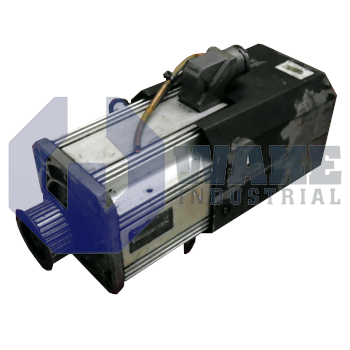Product Description
The MAD100B-0050-SA-M2-KP1-05-N1 is a high performance asynchronous motor with a permanent magnet squirrel cage rotor made by Bosch Rexroth. Specifically suitable for high power applications, the Rexroth IndraDyn A asynchronous motors, especially the MAD series offer blower-cooled for rotary drive applications. The motors are protected by an IP65 rating which makes them suitable to be used under tough conditions and can be used for a long period with little or no maintenance. These motors when combined with Rexroth IndraDrive controllers provide a comprehensive and modular open system which can solve numerous tasks over a wide range of industries including printing, food processing and metalworking where power density and versatility are critical factors.
In order to control the heat generated while in use, the motor has a cooling system which is forced air cooling. This system consists of permanently mounted blowers (fans) at the back of the motor as a part of the system. These blowers are used to continuously blow air to cool the motor and keep it to a certain temperature to avoid overheating and damaging the internal parts. The blowers function on their own and do not have any connection to the motor's drive controllers and need an external source of power. In particular, these are 3-phase blowers which means that each of them requires a separate power source to work efficiently. They accept input voltage of 3 x 400V with the voltage tolerance of +/- 15% and 3 x 440V with the voltage tolerance of +/- 10%. The blowers can work at the recommended voltage of either 50 Hz or 60 Hz thus making it possible to use the blowers in any environment.
Nonetheless, the blower has a consumption of 450W, but what is more important, it has an airflow rate of 1000 m^3/h, which cools the motor and protects it. This makes the motor work effectively even when the motor is subjected to high load conditions. In addition, the motor has two temperature sensors KTY84-130. These sensors are placed in a manner that can help in identifying any increased rate of temperature hence adding an element of safety to the system in a way that it is able to identify any changes in temperature and take appropriate measures to prevent it from overheating.
 Wake Industrial Warranty
Wake Industrial Warranty















